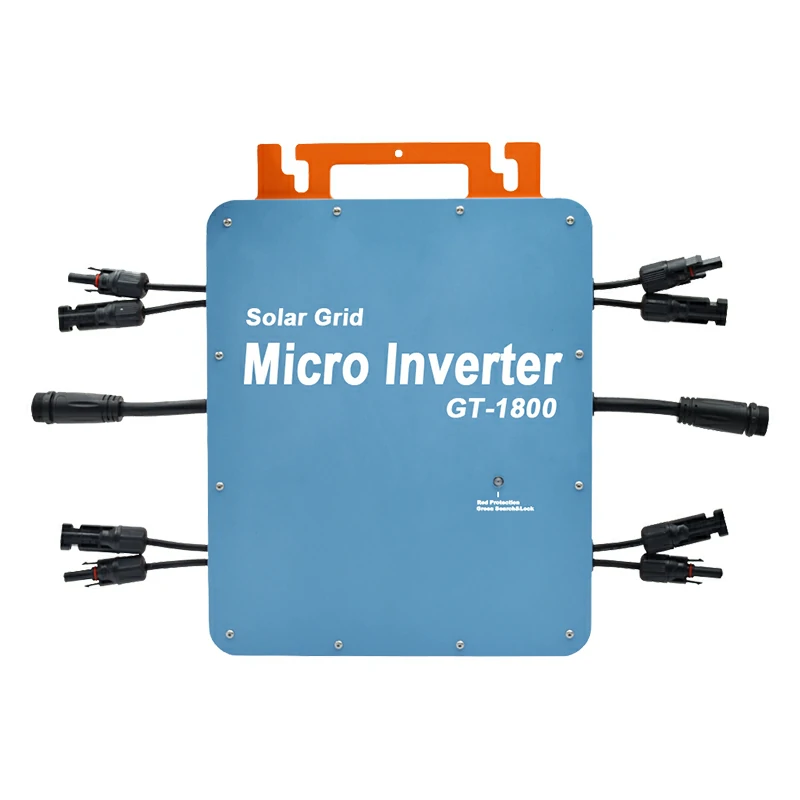Introduction
In the realm of solar energy systems, micro inverters play a crucial role in converting direct current (DC) generated by solar panels into usable alternating current (AC) for homes and businesses. Testing micro inverters before purchase ensures optimal performance and reliability, safeguarding your investment in solar technology. This article explores essential testing procedures and considerations for prospective buyers.

Understanding Micro Inverters
Micro inverters are distinct from traditional grid-connected inverters like string inverters. They operate on a per-panel basis, converting DC to AC directly at the panel level. This design offers advantages such as enhanced energy harvest, better shading tolerance, and individual panel monitoring capabilities. When choosing a micro inverter supplier, evaluating these factors ensures compatibility and efficiency with your solar setup.
Pre-Purchase Considerations
Before purchasing a micro inverter, several key factors should be carefully evaluated to ensure compatibility and optimal performance with your solar energy system:
- Power Rating and Efficiency
- Micro inverters come in various power ratings. Ensure the selected model can handle the output of your solar panels.
- Efficiency ratings indicate how effectively the micro inverter converts DC to AC power. Higher efficiency means more energy production from your panels.
- Compatibility with Solar Panels
- Verify compatibility with the type and specifications of your solar panels. Different panels may require specific micro inverter models for optimal performance.
- Consider the voltage and current ratings of both the panels and the micro inverter to avoid mismatch issues.
- Warranty and Reliability
- Check the warranty offered by the micro inverter supplier. A longer warranty period typically reflects confidence in product reliability.
- Research customer reviews and testimonials to gauge the reliability and longevity of the micro inverter models offered by the supplier.
Testing Micro Inverters: Steps and Methods
Testing micro inverters before installation is crucial to verify their performance and ensure they meet specified standards. Proper testing involves several systematic steps and utilizes specialized equipment for accurate assessment.
Initial Visual Inspection and Quality Check
Before conducting electrical tests, perform a thorough visual inspection of the micro inverter:
- Inspect the exterior: Check for any physical damage or signs of wear.
- Review manufacturer labels: Ensure all specifications match the requirements of your solar system.
- Verify connections: Ensure connectors are intact and securely fastened.
Electrical Testing Procedures
- Voltage and Current Output Measurements
Use a multimeter to measure the following parameters:
| Parameter | Test Method |
| DC Input Voltage | Measure at the input terminals |
| AC Output Voltage | Measure at the output terminals |
| AC Output Current | Measure with a clamp meter |
- These measurements confirm that the micro inverter is operating within specified voltage and current ranges.
- Load Testing
Conduct load tests under various conditions:- Different sunlight levels: Measure output performance in both low and high sunlight conditions.
- Temperature variations: Test performance under temperature extremes to assess thermal management capabilities.
- Recording these tests helps evaluate how the micro inverter adapts to real-world solar conditions.
Tools and Equipment Needed
To perform accurate testing, gather the following tools:
- Multimeter
- Clamp meter
- Irradiance meter
- Temperature probe
- Insulation resistance tester (for safety checks)
Using calibrated equipment ensures reliable measurement of micro inverter performance.
Interpreting Test Results
Interpreting test results accurately is essential to assess the performance and functionality of micro inverters. Here’s how to evaluate the data gathered from testing:
- Comparing with Manufacturer Specifications
- Voltage and Current Output: Compare measured values with the micro inverter’s datasheet specifications.
- Efficiency: Calculate the efficiency using the formula: Efficiency (%) = (AC Output Power / DC Input Power) × 100%. Compare with the manufacturer’s stated efficiency.
- Acceptable Performance Levels
- Voltage Tolerances: Ensure AC output voltage is within ±5% of the rated value.
- Current Handling: Verify the micro inverter can handle peak current loads without exceeding its rated capacity.
- Efficiency Standards: Aim for an efficiency rating close to the manufacturer’s stated value to maximize energy conversion.
- Identifying Potential Issues
- Underperformance: If test results consistently fall below expected values, investigate potential causes such as wiring issues or component failures.
- Inverter Shutdowns: Test how the micro inverter responds to overload conditions or rapid changes in solar irradiance.
Common Issues and Troubleshooting Tips
During testing, be alert for common issues that may affect micro inverter performance:
- Overheating: Ensure adequate ventilation and monitor temperature rise during load tests.
- Intermittent Faults: Investigate any intermittent shutdowns or erratic behavior during operation.
- Compatibility Problems: Address any compatibility issues with solar panels or communication interfaces.
Safety Precautions
Testing micro inverters involves working with electrical components and potentially hazardous voltages. Follow these safety precautions to mitigate risks:
- Personal Protective Equipment (PPE)
- Wear insulated gloves and safety glasses to protect against electrical shocks and debris.
- Use appropriate footwear and clothing to prevent accidental contact with energized components.
- Workspace Preparation
- Ensure the testing area is dry and well-ventilated.
- Keep flammable materials away from the workspace to prevent fire hazards.
- Handling Electrical Connections
- Before testing, disconnect the micro inverter from the solar panel array and AC mains.
- Verify that all connections are secure and insulated to prevent short circuits.
- Safe Testing Procedures
- Use insulated tools when adjusting or probing electrical connections.
- Avoid touching exposed conductors while the micro inverter is powered.
- Emergency Response
- Have a fire extinguisher rated for electrical fires nearby.
- Know the location of emergency exits and first aid kits in case of accidents.
Conclusion
Properly testing micro inverters before installation is essential for ensuring they meet performance expectations and operate safely within your solar energy system. By following systematic testing procedures, evaluating test results accurately, and observing strict safety protocols, you can confidently select and deploy micro inverters that enhance the efficiency and reliability of your solar setup.




